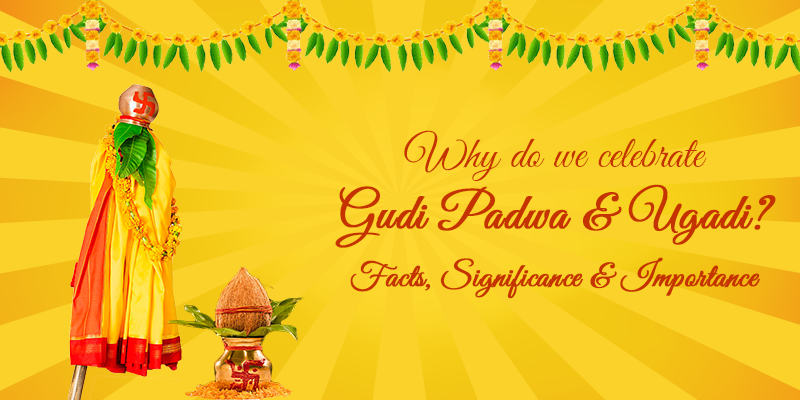Facts, Significance, and Importance
India is largely an agricultural country where most of the festivals are typically related to the beginning and finish of agricultural seasons. Similarly, Gudi Padwa marks the same rituals that it is celebrated just after the end of the Rabi season. This festival is related to the prosperity and well-being that’s why in this day everything looks bright and vibrant. Also, people wear traditional garments on Gudi Padwa.
Gudi Padwa (also Gudi Padva) is one of the famous Hindu festivals that marks the beginning of New Year as per a Shalivahan Shaka. It is a harvest festival which is celebrated with utmost fanfare and grandeur not only Maharashtra but also in other parts of India such as in the states of Karnataka and Andhra Pradesh.
‘Ugadi’ which is the famous festival of Andhra Pradesh and ‘Yugadi’, the festival of Karnataka are the same festivals but both are pronounced differently in the respective regions. The day also marks the beginning of Chaitra Navratri according to the lunisolar Hindu calendar, that leads up to Ram Navami, Lord Rama’s birthday to be celebrated on a ninth day. This year the festival will be celebrated on March 18, 2018, because Navratri is also starting from this day.
‘Ugadi’ is considered extremely auspicious as it is believed that on this very day Lord Brahma had created the universe which marks the beginning of the Satyayug that’s why devotees take a sacred oil bath, which is considered auspicious. This day is also celebrated to mark the coronation ceremony of Lord Rama. Lord Rama returned to Ayodhya after spending fourteen years in exile.
People also decorate their homes with Mango Leaves and special Rangoli which are made in front of the house or in a courtyard. People also take time to wash their homes during ‘Ugadi’. Old and useless objects are discarded. The main entrance or the doorway is decorated with a ‘toran’ and for the puja, the Gudhi (Lord Brahma’s flag –Brahmadhvaj) is hoisted. Also, everyone in the family wears new clothes and celebrate the festival by wishing each other.
‘Ugadi’ literally begins on a bittersweet note with the eating of a specific mixture called Bevu-Bella which consists of the Neem and Jaggery. It symbolizes that life is a mixture of both good and bad, Happiness and Sorrow. It teaches us that we must accept both happiness and sorrow with equal openness.
Practically the celebrations are often linked to the change in season and to the sowing and reaping of crops. This day marks the end of one agricultural harvest and the beginning of a new one. The Gudi Padwa or Ugadi is thus celebrated at the end of the Rabi season. Also, in this day there are many delicious dishes and desserts are made where the making of “Puran-puri” is a custom on this day.
Also, the making of dishes varies state-to-state where Maharashtrian make and eat Sakkar Bhaat (sweet rice), Shrikhand and Puri and Puran Poli on this day and the Konkanis make Kanangachi Kheer which is a sweet dish made of sweet potato, coconut milk, jaggery, and rice.
This day is also believed to be auspicious for ‘vaastu puja’ and for beginning new business ventures. On this day, several processions are also taken out. In this day, the families get together and the people visit their old friends. Also, the people, who stay away including out of the country and those who do not meet relatives throughout the year express well-wishes through phone calls to their relatives and friends.











